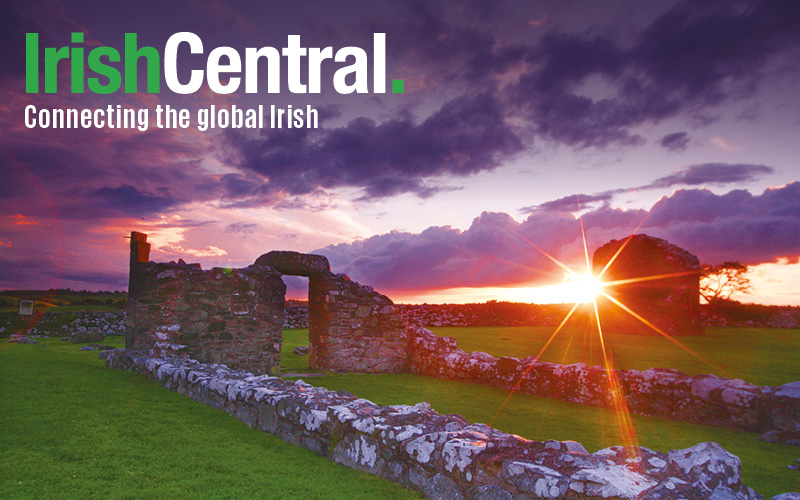They spoke slowly and quietly, decades of heartbreak punctuating every word. Stopping only to strangle back the tears in their throats.
They pleaded for help in tracing the children so cruelly taken from them and sent to the U.S. for adoption.
They are the forgotten Irish women, the women who were pregnant and unmarried, turned out by their families, and who lost their children to forced illegal adoptions to the U.S.
To research and write “The Secrets of Roscarbury Hall,” I spoke with many of these women who live with a well of loss in their hearts to this day and every day.
In the United States, their children have grown up with the pain of an unspeakable loss and wrong constantly tugging at their hearts.
All want the story of forced illegal adoption of children to the U.S. to travel the world, be talked about and recognized as one of the terrible practices of the past.
When “The Secrets of Roscarbury Hall” is stacked on book shelves across the U.S. this month of October it is not only the realization of a publishing dream for me as an Irish author, but also the fulfillment of a promise to these forgotten women that their story would get an international audience.
I was delighted when Skyhorse Publishing of New York decided to bring what was then the bestselling “The Ballroom Café” to a North American audience.
Now called “The Secrets of Roscarbury Hall,” this is the first work of fiction to come out of Ireland since the scandal of what really happened in those mother and baby homes finally rumbled to the surface two years ago.
Conservative estimates put at 2,000 the children secretly adopted and sent to America from mother and baby homes run by religious orders in Ireland.
The mothers left behind were unmarried, rejected by their families and almost outcasts in Catholic Ireland.
For many, the shame of their circumstances prevented them speaking out; they got on with their lives as best they could, because it was expected of them.
For me, it was the story of one 80-year-old woman which was the main inspiration behind “The Secrets of Roscarbury Hall.”
Margaret wanted to see her son before she died, to put her arms around him, to look in his eyes.
The pain of this mother whose child had been taken from her as raw as the day she lost him, almost sixty years before.
“I just want a chance to tell him I am sorry, but I had no say in it. It was all wrong, but mine was and is a small voice,” she said, tears running down her face.
She was right; her voice was a small one, but unforgettable.
That was several years ago when working as a journalist, I came across Margaret whose child had been illegally taken for adoption to the United States.
She never did get to meet her son again, though she had the comfort and support of the other children she had later in a happy marriage.
There were many other “small voices” over the years brave enough to tell their stories publicly.
They threw aside the shame heaped upon them by a backward-looking country for being an illegitimate child and cast a spotlight on the harsh practices of the past, which saw them treated like dirt and their children taken, often without their consent, and sent to America for adoption.
All fiction reflects life and “The Secrets of Roscarbury Hall” is a novel concentrating on the “forced adoption story” from both sides, moving between 1960s America and the Ireland of 2008.
It is set in a crumbling old mansion, Roscarbury Hall, Rathsorney, County Wicklow, where two sisters, Ella and Roberta O’Callaghan, lived among the misty parkland and the overgrown gardens running down to the sea.
A deep silence lasting decades dominated their lives. They only communicated through notes, short sharp notes slapped down on the hall table.
When Ella, to keep the bank from repossessing the house, opens a cafe in the old ballroom upstairs, her sister is furious. A
An American, Debbie Kading, in Ireland tracing her roots, befriends Ella and starts to work in the cafe.
Debbie is looking for answers but meets a wall of silence at the local convent.
An adoption scandal is uncovered that reaches far beyond the convent and the tiny village of Rathsorney.
“The Secrets of Roscarbury Hall” may be a story filtered through life in Rathsorney village and the cafe, where people gossip and sip tea from china cups, but it reflects the tragedies of those ordinary lives lived under the shadow of a shameful secret.
There are strong women in the story, women who have been dreadfully wronged and have suffered pain at the hands of society.
But these women also love to take tea, chat, eat glorious cakes and indulge in a bit of romance and a lot of gossip.
The humor in the novel provides the lighter moments.
The research for the novel involved listening to the stories of women who were forced to give birth without painkillers and who looked after their children for two or three years until the nuns deemed them ready for adoption.
Some saw their children dressed up for a nice photograph which was then sent to prospective parents.
Many of the children were simply taken from their beds.
A lot of mothers did not get to say goodbye.
Even those who wanted their children put up for adoption did not know that a home as far away as America had been found.
The religious organizations who arranged these adoptions in the U.S. were given a generous donation for each child.
There was no follow-up on these children and only in recent years, as mothers in Ireland have cried in public looking for their children, have men and women in the U.S. come forward with stories of far from idyllic childhoods with their adoptive U.S. parents.
The practice was not confined to Ireland, but Australia has been the first to apologize.
“The Secrets of Roscarbury Hall” was the book I had to write, the story I had to tell.
It is essentially a tale of family and second chances.
We can only hope that the mothers left behind and the children taken away can get a second chance to meet and look in each other’s eyes once again, or feel a sense of justice that an apology from the Irish State could bring.
---
A leading journalist in Ireland, Ann O'Loughlin worked for Independent Newspapers before spending time in India living and working as a journalist. She is currently a senior reporter with the Irish Examiner covering legal issues. She is married with two children.
This story first appeared in the Irish Echo. To read more, visit their website here.




Comments